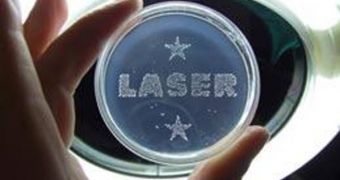The study of protein structures is a very complex and delicate one, focusing on tiny formations at a very small scale. But this field of research could soon benefit from a large push forward, as researchers recently announced the development of a new laser technology, which allows the use of light pulses to grow High-quality crystals that are indispensable to protein study. In their studies, biologists use crystals so that they can imagine the structure of proteins via X-ray imaging. Other chemicals are also used in the process, Nature News reports.
Additionally, in the pharmaceutical industry, for instance, the production of crystals inside various chemicals is of the utmost importance, as is having their ability to trigger their formation at a moment's notice. This is precisely what the new technology is trying to provide – a way of creating high-quality crystals simply by shining bright and fast pulses of laser light onto a specific kind of gel.
“Crystallization still remains largely a black art,” explains Imperial College London protein crystallographer Stephen Curry. The first step of the process, when the actual aggregation begins around a nucleation point (a spec of dust or a crystal seed), is the most difficult to control, he adds.
In the new technology, developed by a team of researchers at the University of Edinburgh, led by chemist Andrew Alexander, the need for a nucleation point around which the crystal grow is eliminated. The gel contains several chemicals, which can be forced together into a crystal using lasers. The best part is that the beams of stimulated light can easily control when and where the crystals are formed, as well as a number of other traits. At the root of their accomplishment lies a process known as non-photochemical laser-induced nucleation (NPLIN).
The UE team relies on using near-infrared wavelength lasers, shooting beams of light in 7-nanosecond intervals. They are focused in a gel containing the polymer agrose and a solution of potassium chloride. The reason why this type of polymers is used is because previous achievements have demonstrated that manipulating agrose can result in single, large, high-quality crystals, which are of tremendous use for analyzing the inner structure of proteins. The weird thing about the new technology is that the research team at this point has little clues as to how nucleation within the gel actually happens.

 14 DAY TRIAL //
14 DAY TRIAL //